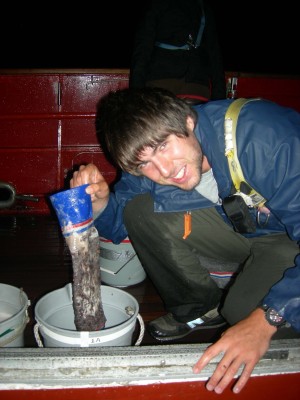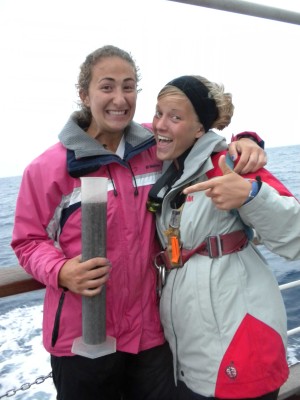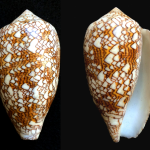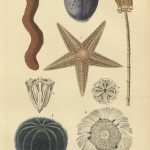[Update 19 Aug 17:20: Sofia sent me a photo of the liter o’ Clione and I have added it below. BEHOLD THE GLORY.]
Number 2 in my series of posts from my tall ship cruise from Hawaii to California this summer.
I never, ever get tired of putting a zooplankton net in the water and seeing what comes up. Zooplankton are usually invisible from the surface (there are notable exceptions) but concentrating them with a net brings up an entire menagerie of amazing and beautiful jellies, crustaceans, molluscs, and more. Sometimes the critters are pretty similar for hundreds of miles, and sometimes there are sudden, massive changes or huge swarms of one thing or another.
And one night on the Seamans, we did indeed get netfuls of vicious tentacle monsters. We were in the North Pacific Transition Zone (PDF), about 800 miles west of Oregon, wedged between the clear, warm waters of the North Pacific Central Gyre and the nutrient-filled, cold waters of the subarctic Alaskan Gyre. This is a happy wonderland for many ocean animals, since the two water masses create good eats, but all the swirls and eddies make for lots of biological surprises.
Our vicious tentacle monsters were gallon upon gallon of the shell-less swimming snail Clione. Known as “sea angels,” these little guys are about an inch long, and specialize in eating their fellow swimming snails (This group of swimming snails are called “pteropods.”). While Clione are relatively common, it’s pretty rare to be in the midst of a swarm – in my desultory search of the Clione literature, I could not find a record of a aggregation this dense without prey nearby.
Here’s SEA student Dan Van Niekerk holding up the cod end of a plankton net, stuffed to the brim with thousands and thousands of Clione. (Most plankton nets have a wide mouth which narrows to a small sock or jar, which is removable. This is the “cod end.”)

The students had the dubious joy of extracting all these slimy dying snails from the net – they told me it was a liter and a half of pure Clione goodness. Here are Sofia and Cassie with the first liter – all that brown stuff is tiny dead pteropods!

While they look like brown muck in the net, Clione are actually quite beautiful. They fly through the water looking all adorable, like this.
But of course – and come on, you knew there was an “of course” – Clione are actually vicious predators. They specialize on shelled pteropods, like this cute little guy Limacina. When they see a pteropod, they shoot tentacles out of their face, grab their unfortunate prey, and wrestle it into position to be slowly eaten. But you don’t have to take my word for it…watch this video and see the innocent little sea angels turn into minions of Cthulhu.
For only $900, you too can have Clione in your kitchen. But you won’t be able to see any tentacle action. Keeping a whole separate tank filled with other pteropods for them to eat would be rather hard, so this tank keeps the Clione so cold that they’ll live for months to around a year without eating.






I’m quite sure that the character of Dren in Splice was based on a Clione.
Miriam, you have totally given me a new inspiration for my Ocean Invasion series. Thanks!